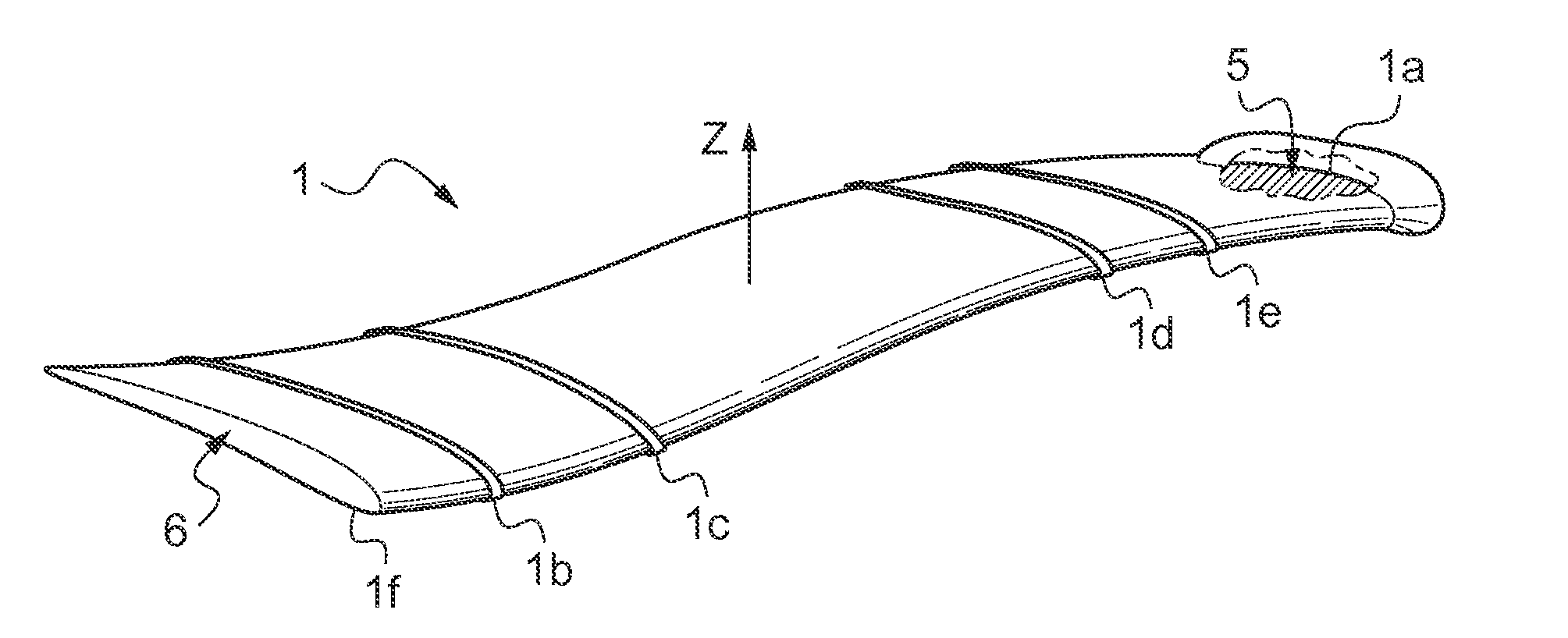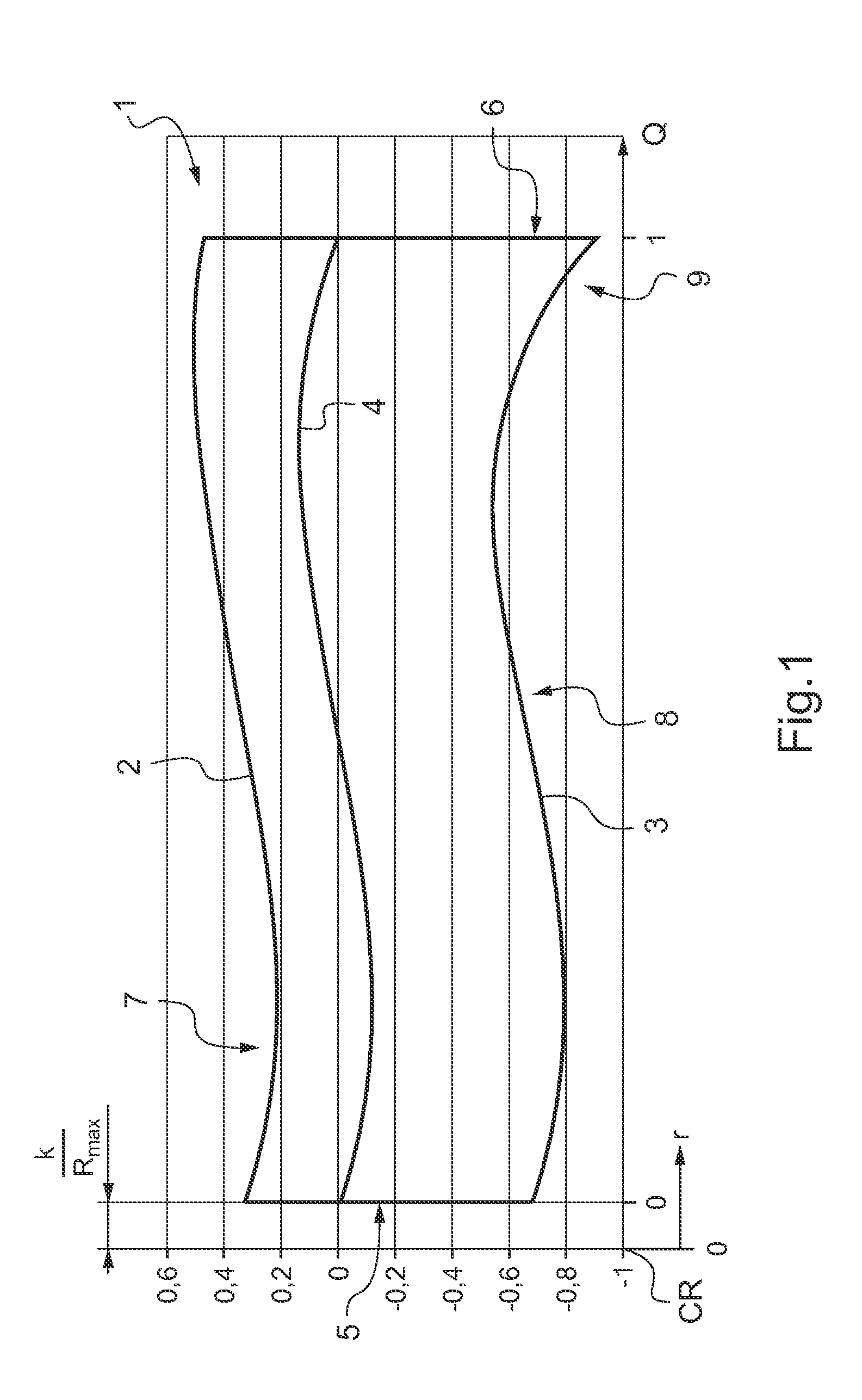Blade for a helicopter Anti-torque device
a technology for anti-torque devices and blades, which is applied in the direction of propellers, propulsive elements, water-acting propulsive elements, etc., can solve the problems of unsuitable blades presenting geometrical shapes and unsuitable anti-torque devices, and the anti-torque device including such blades and such an arrangement of vanes is not capable of significantly improving its performance, so as to reduce the monopole noise, “thickness” noise, large variation chord
- Summary
- Abstract
- Description
- Claims
- Application Information
AI Technical Summary
Benefits of technology
Problems solved by technology
Method used
Image
Examples
Embodiment Construction
[0065]Elements that are structurally and functionally identical and present in more than one of the figures are given the same numerical or alphanumerical reference in each of them.
[0066]The objects given to the invention are achieved with the help of a blade 1 for a tail anti-torque device of a helicopter. The blade 1, shown diagrammatically in FIG. 1, by way of example, comprises an assembly of airfoil profile sections and presents a leading edge 2 and a trailing edge 3. More precisely, FIG. 1 shows a blade 1 prior to twisting relative to a line of twist 4 in compliance with a predetermined twisting relationship, and as a result it presents a plane extension surface defined firstly between the leading edge 2 and the trailing edge 3 of the airfoil profile sections, and secondly between the root section 5 and the end section 6 having respective airfoil profiles 1a and 1f (FIG. 2). In other words, this plane extension surface corresponds substantially to the plane defined by the chor...
PUM
 Login to View More
Login to View More Abstract
Description
Claims
Application Information
 Login to View More
Login to View More - R&D
- Intellectual Property
- Life Sciences
- Materials
- Tech Scout
- Unparalleled Data Quality
- Higher Quality Content
- 60% Fewer Hallucinations
Browse by: Latest US Patents, China's latest patents, Technical Efficacy Thesaurus, Application Domain, Technology Topic, Popular Technical Reports.
© 2025 PatSnap. All rights reserved.Legal|Privacy policy|Modern Slavery Act Transparency Statement|Sitemap|About US| Contact US: help@patsnap.com



